Foraging Around the Nutmeg State
By Ariana Rawls Fine
Foraging is an endeavor as old as time for humans. Searching and collecting food sources in the wild is what sustained us alongside our hunting. Despite the plentiful “hunting” we now do in our local supermarket aisles and farmers’ markets, people have continued to forage for the enjoyment of nature, nutrition and flavors of wild food, and the excitement of the search. The purposeful time spent outdoors in nature with family and friends provides physical, mental and emotional advantages in addition to the obvious food benefits.
There is quite a variety to forage in Connecticut, especially in the fall. You can find and harvest nuts, berries, mushrooms, trees and more. Although it is hard to find a significant amount of food, the high-nutrient and low-calorie value of the foraged food can add interesting flavors to meals, says Joe Ross (aka “Joe Forager”). The 20-year foraging veteran is the creator of EatThePlanet.org, which delves into learning plant and mushroom identification skills in order to safely forage. You can potentially make a meal out of some items, such as chicken of the woods.
Going Nuts
Harvested nuts are a treat that require harvesting, breaking open and cleaning—and sometimes cooking. Even if you gather a good stash, it will still be a small amount, Ross cautions. The biggest exception is acorns, but it takes a cold-water processing method to get the tannins out. The acorns need to be deshelled, rid of tannins and fully dried. Once tannins are removed, you do have a significant amount of it to make into flour by crushing the acorns and storing it well.
Ross is a fan of hickory nuts in prime season with the taste of its nuts and bark leaning toward a maple syrup flavor. The nuts of the Shagbark hickory, which is native to the New England area, ripen in October and November.
There are other wild trees that you can forage in the woods. Butternut and black walnut are native to the area. Kousa dogwood’s berries ripen in August and have a pumpkin/mango taste but stay away from the native flowering dogwood.
With hazelnuts, there are a lot of lookalikes—alder, witch hazel and others based on leaf shape—so you need to know what you are looking. “Once you can identify hazelnut, you are good,” Ross explains. “Just smash the shell and eat! It is also a good one to plant in your backyard.”
Some private properties have large, old chestnut trees. “If you can find them on your property, chestnuts take minimal processing,” Ross states. “Make sure to get the spikes off the shells though. Also, you don’t want to mix up chestnuts with toxic horse chestnuts.”
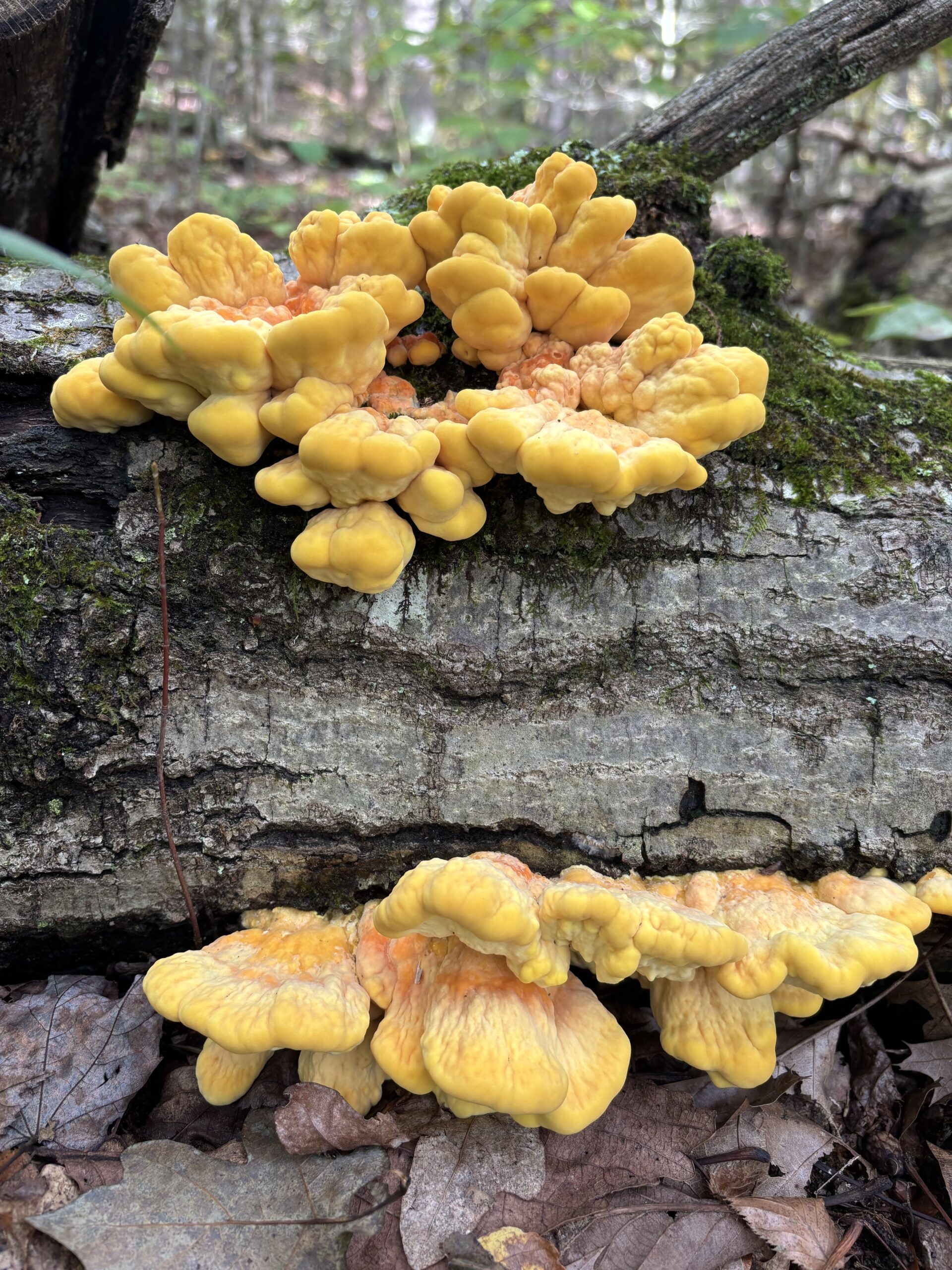
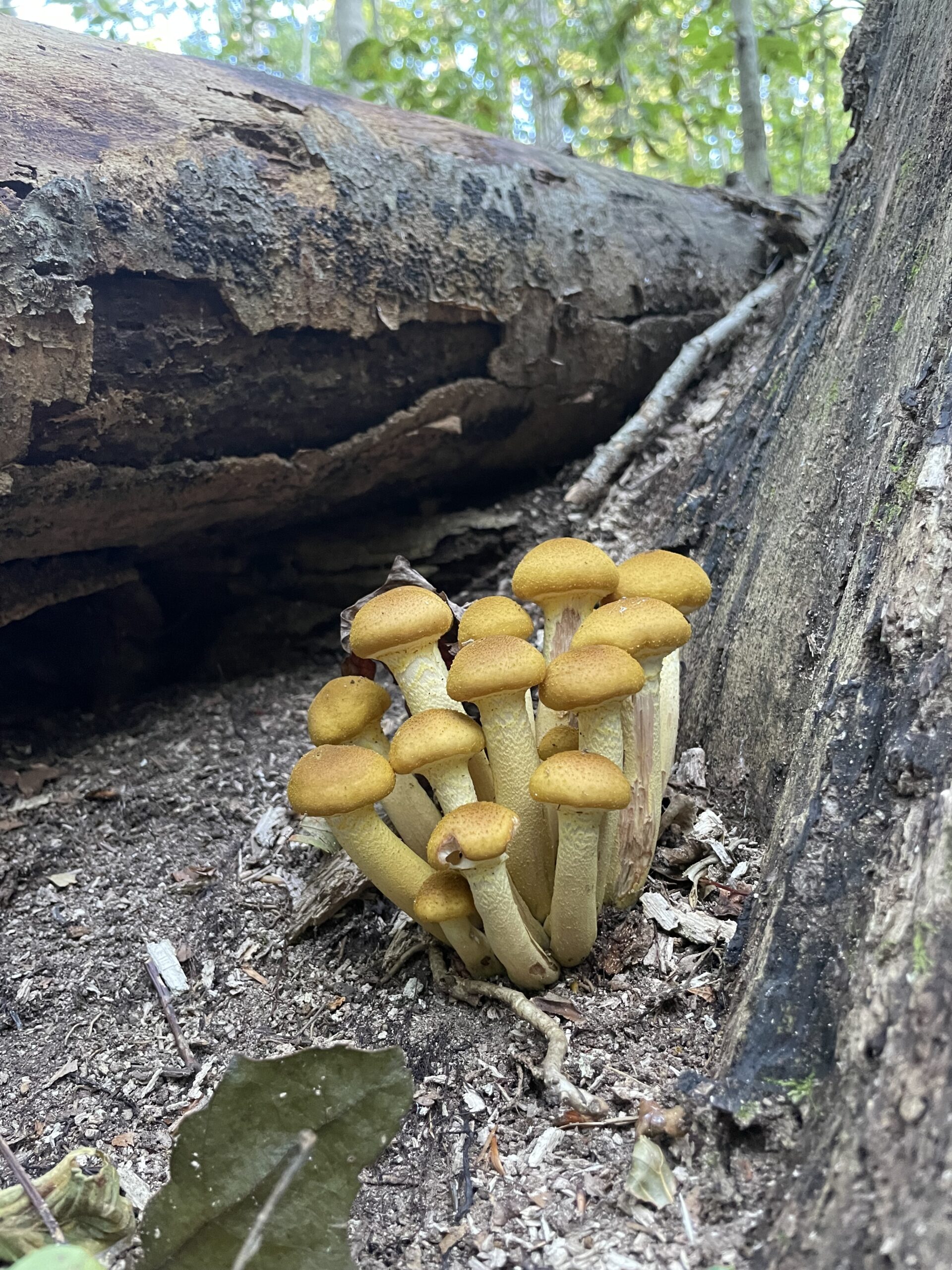
Finding the Fungi
In early October, it is peak mushroom time with local finds. Lion’s mane mushrooms, which resemble a lion’s mane, are quite large, white and shaggy. Maitake mushrooms are nicknamed “hen of the woods” because they look like a hen sitting down. An oyster mushroom also resembles its namesake and has a slippery texture like oysters. As you can probably guess, chicken of the woods is described as having a similar taste and texture to chicken.
For mushroom identification, it can be more complicated. It is important to know what trees it is growing next to; the time of year to harvest; its color and if it changes color; whether it has pores, gills or neither; and if it has a stem. At the end of all of that identification, there are three dozen common types of choice-edible mushroom species that are edible and taste good, says Amy Demers. She is the founder of Connecticut Foraging Club, which leads monthly foraging walks and classes throughout the state.
“There are around 10,000 known mushroom species in the U.S.,” explains Demers. “The majority are inedible or not something you would want to eat. Not toxic but not tasty. The general breakdown is 4% are choice-edible ones, 20% are edible but tasteless, 20% are toxic with gastrointestinal upset, and 1% are deadly. Around 50% are inedible but not toxic. Chaga, reishi—bitter and tough but can make a tea— and turkey tail are examples of non-edible but medicinal mushrooms.”
Fall Foraging
Some of Demers’ favorites to harvest in the fall are field garlic, which is an invasive onion with hollow leaves and a garlic smell, and garlic mustard greens. The latter can be found in dappled sunlight on forest edges or in less dense forests. “Wild grapes ripen in the fall with the most common being fox grape, which tastes like concord grapes. It is so good for you. The skins are anti-inflammatory and anti-aging,” she says. “The fruit of the autumn olives has an astringent, tart taste. You can make fruit leathers from them or add to smoothies. The seeds are high in omega-3s.”
Fruits such as crabapples, blackberries and blueberries are easier to identify. Hawthorne berries, which grow on trees, have softer berries that can taste like apples, Demers states. It is harder to find persimmons, which usually ripen in early winter.
As for flowers, Demers says identifying flowers’ unique characteristics when they bloom is the easiest time to identify when you are harvesting the plant later in the year. You may not be able to identify it well in March, but you can in May. You can then return to the same place next year to forage it. For instance, wild violet (purple flowers) and garlic mustard (white flowers) look similar and are both edible. In early spring, the foliage can be mistaken for each other. Once they produce flowers, they are unique.
Autumn is also a good time to harvest grapes/autumn olives. Late summer through early winter is a time to pick root vegetables, which produce one vegetable per plant, and tubers, a crop with multiple “children” per plant. Some tubers are better when cultivated rather than wild. Demers indicates that wild parsnips aren’t as good and wild sunchokes are smaller. You can forage for burdock roots but she points out that it is hard to dig up the wild roots.
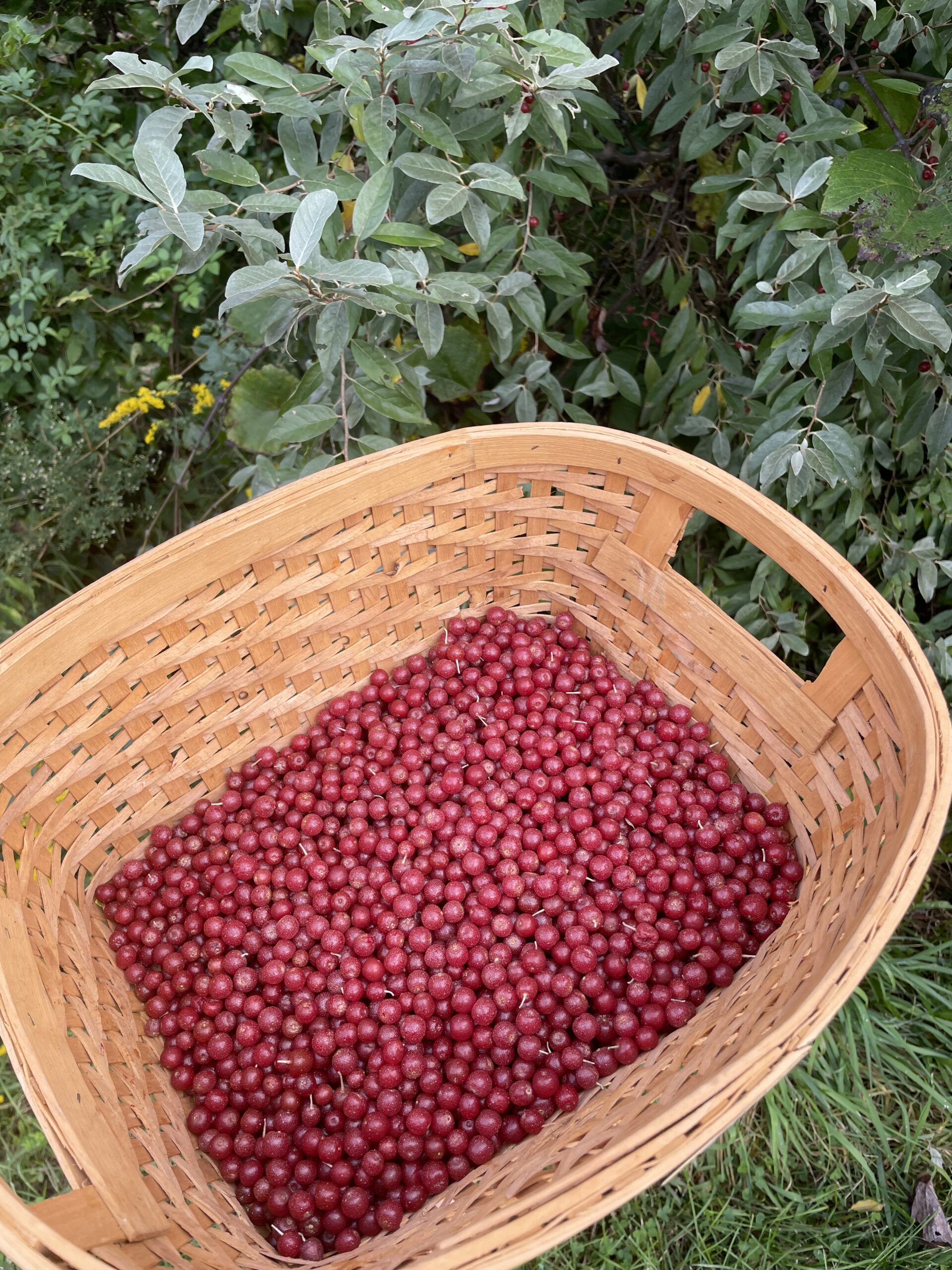
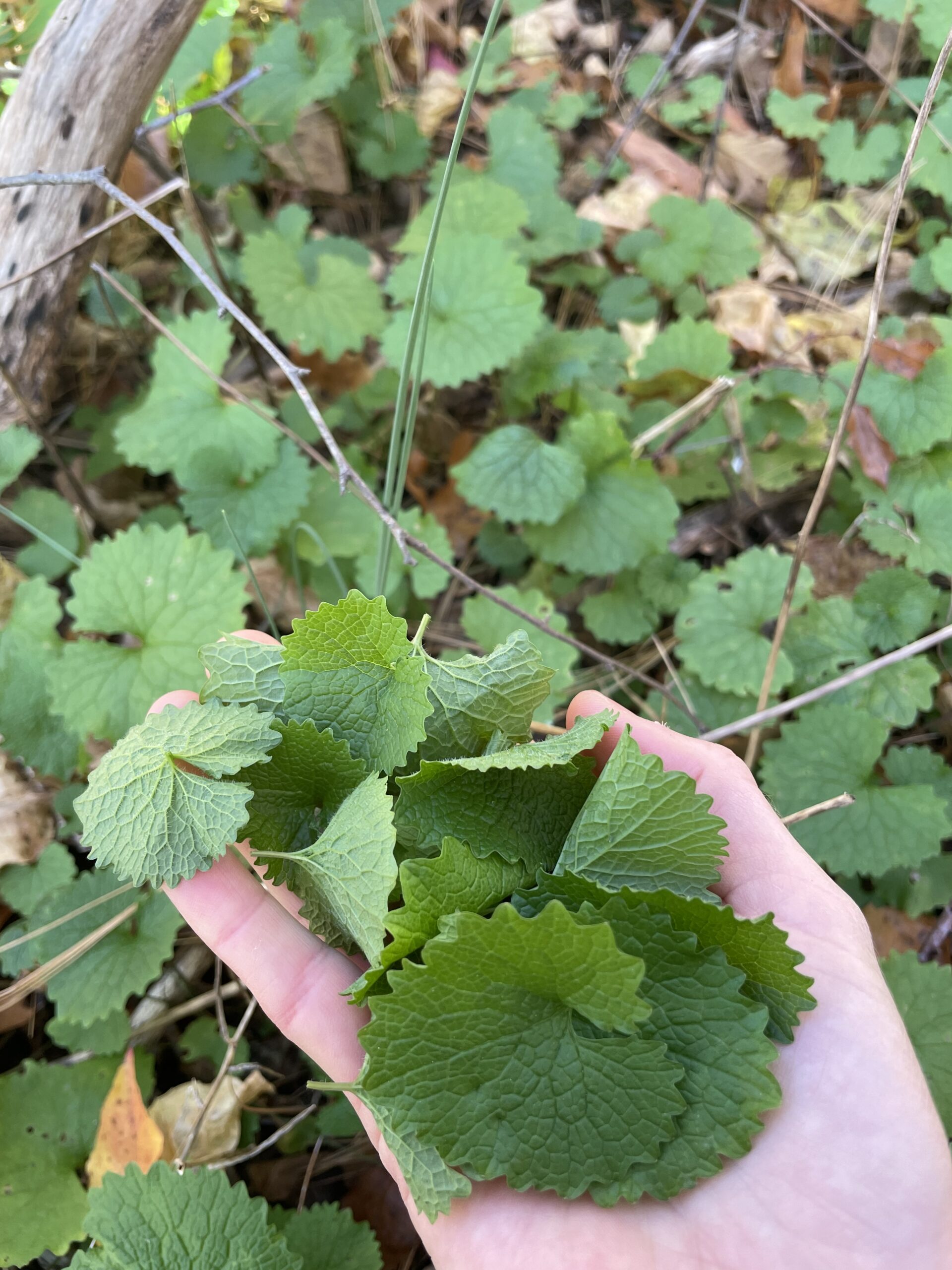
Best Practices: Safe and Sustainable
There are a lot of great edibles and plants but there are toxic ones as well. Be 100% positive on identification by using three sources, such as an identification book, video and/or app. Know what the lookalikes look like. The most valuable option is taking an in-person class to scent, feel and see the smells, texture and growing habitat. One thing to definitely not eat are pokeberries as the entire plant is poisonous, Ross states. Although ingesting a couple berries is not likely to cause symptoms, according to the National Capital Poison Center, eating more may cause symptoms such as gastrointestinal pain, nausea/vomiting, diarrhea, low blood pressure and more.
Demer offers words of caution. There are a lot of invasive plants that people learn about that they think would be a good idea to plant in their gardens. But they can become prolific quickly, such as mugwort, which can be found in basically any wooded area. Planting native plants is ideal for foraging on your own property, she recommends.
Another important aspect to be aware of, especially with rare and native plants, is sustainability, explains Demers. In most public places, it is not legal to pick native plants. Picking up an apple or identified berry is fine as you are picking the fruit, not the plant. However, if you are pulling up most or all of the plant, you can decimate the population. For novice foragers, don’t get overzealous and pick everything. Leave some or most to continue coming back year after year, especially with native plants. It is also good to harvest where there is an abundance of that plant.



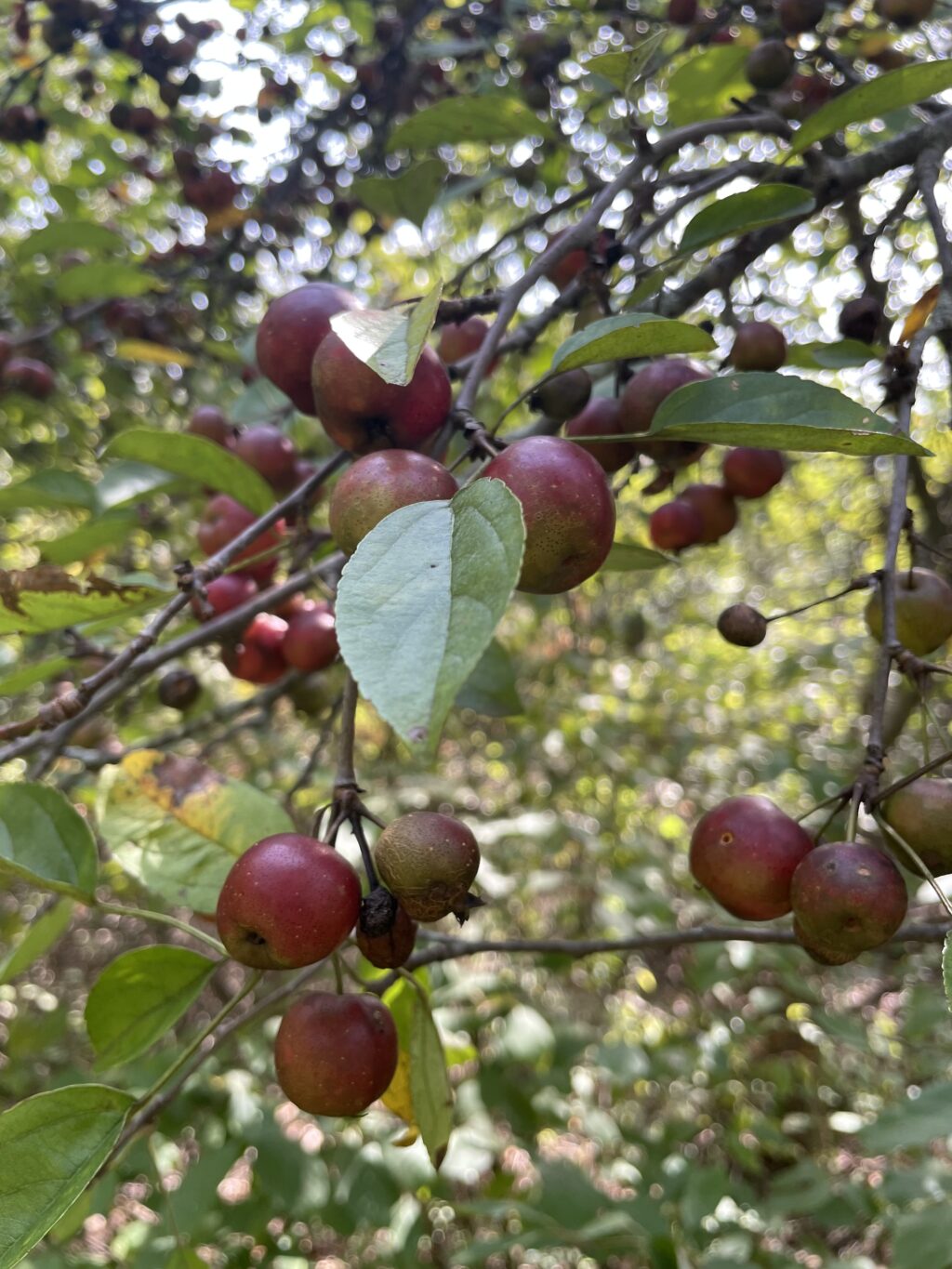


More Stories
Moving Up: Florida to Connecticut for Seasons, Schools and Safety
Listen Here! The Declining Art of Listening
At Home With Jacques Pépin Turning 90, With Celebrations Nationwide